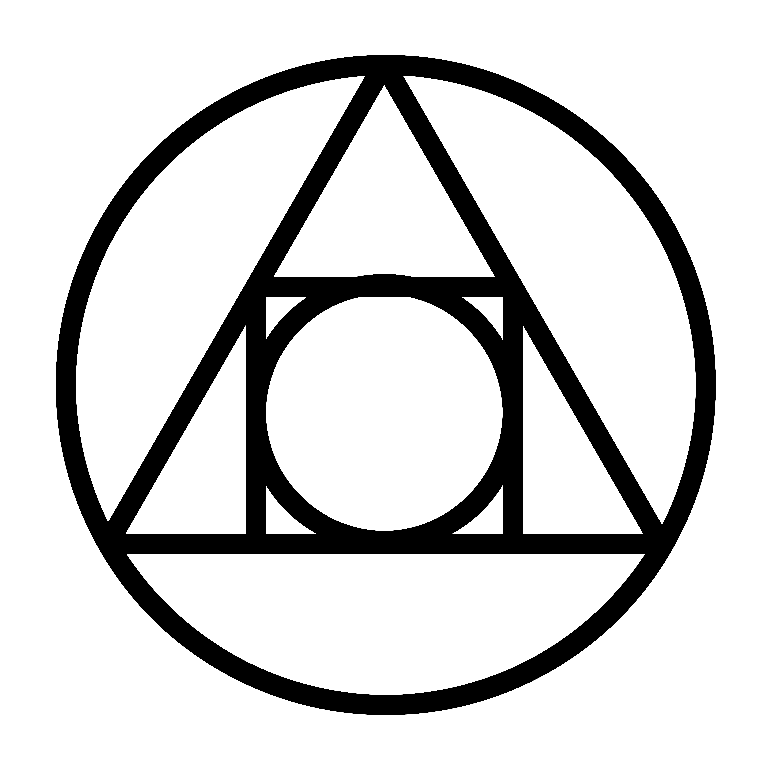Philosopher’s Stone Part Nine:
Liber Secretissimus of George Ripley — The Trinity of Mercury and the Fire of Putrefaction

Philosopher’s Stone Part Nine:
Liber Secretissimus of George Ripley — The Trinity of Mercury and the Fire of Putrefaction
Bibliographic Introduction
George Ripley (c. 1415–1490), canon of Bridlington, is the most renowned English alchemist of the 15th century. His name was later attached to numerous treatises, but among the authentic works attributed to him, the Liber Secretissimus stands out for its brevity and clarity. It circulated in Latin, often paired with other pseudo-Llullian writings, and is notable for its direct exposition of the philosophers’ mercury.
While Ripley’s Compound of Alchemy offers an elaborate verse allegory in twelve “Gates,” the Secretissimus distills his doctrine into plain prose. It reveals Ripley as a synthesizer of Llullian ideas, Artephian antimony doctrine, and Geberian method, weaving them into a coherent statement of the work.
Philosophical Mercury in the Liber Secretissimus
Ripley defines philosophical mercury not as common quicksilver, but as a triple unity:
“Know therefore that our Stone is three and one, and one and three. Three Mercuries there are, yet but one; Sulphur, Sol, and Luna, which being joined, do make one Mercury of the Philosophers.” (Liber Secretissimus)
This mercurial trinity is the key to Ripley’s art. Common mercury cannot endure fire, but the philosophers’ mercury is both volatile and fixed, “abundantly replenished with the dew of heaven and fatness of earth.” It is drawn from Sol, Luna, and Mercury itself, transmuted into a new compound through putrefaction.
Ripley insists that unless the operator grasps this mercury, “he shall never enter into our secrets.”
The Method According to Ripley
The Secretissimus outlines a clear, sequential method:
-
The Three Noble Kinsmen: Sulphur, Sol, and Luna (the three mercuries) are joined in a sealed vessel.
-
Putrefaction: Gentle heat for forty days brings them to blackness:
“Putrefy them therefore in a gentle heat for six weeks, till they be made black as pitch.” (Liber Secretissimus)
-
Separation of Waters: A “phlegmatic water” and “virgins’ milk” rise, which must be reserved for later imbibition.
-
The Dragon’s Earth: The black residue (the “Dragon”) is calcined into a white earth.
-
Imbibition and Congealation: The reserved waters are poured back gradually, each time congealing, until the matter shines like crystalline glass.
-
Color Sequence: From blackness, the matter turns white — the Stone in its lunar form. With further imbibition of fiery water, it reddens, becoming the solar Stone.
-
Projection and Medicine: The white Stone transmutes metals into silver, the red into gold. Both are also declared to be universal medicines for healing disease.
Evidence of Practice
Unlike the Compound, which speaks in allegory, the Secretissimus uses straightforward laboratory language: putrefy, calcine, imbibe, congeal. The stages are recognizable as procedures in a furnace with a sealed glass vessel. Ripley’s description of reserving and reuniting the waters suggests he had practical acquaintance with distillation and cohobation.
At the same time, the Trinitarian framing reveals the theological bent of English alchemy: the Stone is a reflection of divine unity in multiplicity. This fusion of plain instruction with metaphysical allegory is Ripley’s hallmark.
Contribution to the Stone Tradition
Ripley’s Liber Secretissimus makes three critical contributions:
-
Clarification of Mercury: He insists it is not vulgar quicksilver but a trinity of principles extracted from Sol, Luna, and Mercury.
-
Structured Method: He sets out a stepwise procedure of putrefaction, separation, calcination, and repeated imbibition, leaving little ambiguity about the operator’s sequence.
-
Medical Application: The Stone is not only a tincture of metals but a medicine, capable of restoring health and prolonging life.
This places Ripley squarely in the line of Llull and Artephius, but with greater clarity. He transmits not only allegory but a recipe — albeit in guarded terms.
Deciphered Method
Summarized, Ripley prescribes:
-
Seal Sol, Luna, and Mercury together in glass.
-
Putrefy gently for six weeks until black.
-
Separate waters (phlegmatic, virgins’ milk), reserve them.
-
Calcine the black earth (the Dragon) to white.
-
Imbibe with reserved waters, congeal repeatedly, until crystalline.
-
Observe black → white → red sequence.
-
Project for transmutation, or administer for medicine.
Philosophical mercury here is the triple unity of Sulphur, Sol, and Luna, dissolved, putrefied, and reconstituted into a mercurial compound that fixes and tinges.
Conclusion
The Liber Secretissimus stands as Ripley’s most direct prose exposition of the philosophers’ mercury. Where others shrouded their meaning in riddles, Ripley speaks in laboratory terms: putrefy, calcine, imbibe, congeal. His mercury is not quicksilver but a trinity extracted from metals themselves, yielding through blackness, whiteness, and redness the twin fruits of alchemy: transmutation and medicine.
Ripley thus bridges Llull’s allegories and the practical iatrochemistry that would follow. For the seeker of the Stone, his message is stark: without the true mercury, the work cannot even begin.
| Author / Text | Philosophical Mercury | Preparation Steps | Union Method | Fire / Heat | Color Signs | Product Claims |
|---|---|---|---|---|---|---|
| Zosimos of Panopolis (c. 300 CE) | “Divine water” in the kerotakis; volatile spirit ascending and descending | Calcination, sublimation, distillation, washing | Circulation in sealed vessel; dissolution and recombination | Gentle, regulated heating; moist fire | Blackening, whitening, reddening | Tincture, purification of metals; spiritual rebirth |
| Emerald Tablet (Arabic/Latin, 9th–12th c.) | “One Thing” mediating heaven and earth; volatile principle implied | None explicit; “separate the subtle from the gross” | Circulation: ascent and descent of the subtle | Not named; implied gentle force | None specified; allegorical “glory of the whole” | Perfection of all things; universal power |
| Turba Philosophorum (12th c., Arabic → Latin) | Permanent water: vinegar/gum/spume of Luna; volatile-fixative solvent | Putrefaction 40 days; washing; imbibition; coagulation | Copper (sometimes with lead/tin) dissolved in permanent water | Gentle fire; sealed vessel; staged regimen | Blackening → Whitening → Reddening → Tyrian purple | Tincture of metals; Stone “not a stone”; invariable color |
| Artephius, Secret Book (12th c.) | Hidden mercury within antimony; combined with gold | Dissolution of Sol/Luna in “living water” (moist fire); putrefaction | Antimony + mercury + gold in one vessel | Gentle, continuous heat (“hen brooding eggs”) | Black → White → Red | Incombustible oil; multiplicative tincture; longevity |
| Pseudo-Geber, Summa Perfectionis (13th c.) | Purified, sublimed, partly fixed quicksilver | Repeated sublimation with salts/vitriols; fixation of volatile | Mercury + purified sulfur joined in vessel | “Convenient fire”: moderate, continuous decoction | Black → White → Red | Philosophers’ Stone (Elixir); projection of metals; medicinal virtues |
| Arnaldus de Villanova, Epistle (late 13th–early 14th c.) | Hidden mercurial humidity within metallic bodies; not common quicksilver | Dissolution, putrefaction | Unite body and hidden mercury in vessel | Gentle, continuous fire | Black → White → Red | Incombustible Stone; tincture of metals |
| Pseudo-Llull, Testamentum (14th c.) | Philosophical water: metallic phlegm; first water of mercury; middle nature uniting extremes | Dissolution in water; decoction; separation of phlegm; imbibition | Union of Sol and argent vive via middle nature | Continuous gentle fire; decoction, filtration | Black → Pale chaff → White → Red | Red powder tincts silver into gold; Stone of projection |
| Pseudo-Llull, Clavicula (14th c.) | Fixed, hot, dry argent vive extracted from Sol and Luna; not vulgar quicksilver | Calcination of Sol/Luna; imbibition; extraction with corrosive menstrual; amalgamation | True mercury unites with vulgar mercury, fixing it | Gentle fire in degrees; staged regimen | Black → Grey → White → Red | Calx viva; infinite multiplication; projection into Sol or Luna |
| Basil Valentine, Triumphal Chariot of Antimony (15th c.) | Volatile spirit of purified antimony; true mercury of sages | Roasting, washing; regulus; glass of antimony; distillation to draw mercury | Mercury of antimony united with Sol | Gentle, regulated sublimation and distillation; sealed vessel | Black → White → Red | Universal medicine; tincture of metals; longevity |
| George Ripley, Liber Secretissimus (15th c.) | Trinity of Sulphur, Sol, and Luna; not common quicksilver | Putrefy 6 weeks; separate waters; calcine black earth; repeated imbibition and congealation | Unite Sol, Luna, Mercury in sealed glass | Gentle fire for putrefaction; calcination; repeated heat cycles | Black → White → Red | White Stone: silver; Red Stone: gold; both universal medicines |
